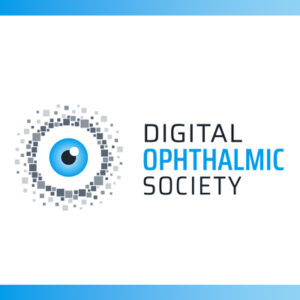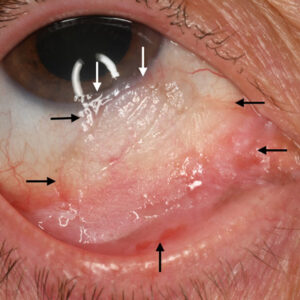Practice Management
December 2023
by William Rabourn Jr.
For most ophthalmic practices and ASCs, patient education is essential to explain what will happen during a clinical visit or a surgical procedure. However, for many patients the explanation may be confusing or not well understood. When it is, it increases patient anxiety, reduces compliance with pre- or post-surgical care, and results in many questions being asked on the day of the procedure.
To address these and other issues, many practices and ASCs are turning to proactive virtual patient education (VPE) to supplement in-person consultations. With VPE, practices can send patients information that outlines the procedure or treatment plan through digital channels such as email or texting. Doing so provides a more thorough understanding of the surgical process and allows patients to become more comfortable and engaged with their treatment.

What types of materials are used for VPE and what else can it be used for? A growing trend for all types of informational learning is videos. With the rise of social media apps like Instagram and YouTube, videos have become a standard way to share information.
Although everyone learns differently, the strength of video is its ability to explain complex subjects using motion graphics, animation, and other visuals that can supplement and clarify in-person consultations and printed literature. This makes videos the perfect medium for explaining surgical procedures such as cataract removal, lens replacement, and LASIK. They can also be used to explain various eye diseases and their treatments, review the risks and benefits of surgery, provide an overview of what to expect on the day of the procedure, and inform patients of pre- and postop care instructions.
Another benefit of videos is that they can be distributed in a variety of ways. For more common conditions and surgical procedures, they can be posted on a practice website. Once uploaded, a link can be shared via text or email to patients either before or after their in-person consultation. Many practices also have their own YouTube channels where they frequently post content on a variety of topics that can be shared in the same way.
There are several options if a practice chooses to use videos as part of its VPE. Media companies such as Rendia offer pre-made videos specifically for ophthalmic care to purchase and use. A knowledgeable ophthalmic marketing agency can create professional content with a custom script that features the doctors and staff of the practice. Some physicians use their mobile phones to record and upload videos on a variety of topics.
While videos are the most impactful medium, this is not the only tool for VPE. Video conferencing can be a helpful way for those in remote or rural areas to receive information and ask questions without having to make multiple trips to the clinic. This could also be a useful tool to assist those with physical disabilities and elderly caretakers.
A practice should be sure to make full use of its website. It’s more than just a digital storefront, it’s a library of useful information that can be shared with patients digitally.
Finally, don’t forget printed literature. These materials can be digitized and sent along with a short message and video via text or email. Using multiple tools in this way provides the greatest impact.
Benefits of VPE
There are many benefits to using VPE for both patients and practices. For patients, having a clear understanding of treatment reduces anxiety, increases satisfaction with care, and improves pre- and post-care treatment compliance, which reduces complications and increases recovery times. It can be especially helpful for patients in remote or rural areas where VPE can provide many of these benefits without multiple trips to the clinic, which can sometimes discourage them from seeking care or following through with treatment plans.
For physicians, this can mean less time spent explaining procedures. In addition, it makes the practice more efficient, increases patient engagement, and helps improve outcomes through better patient compliance.
VPE as a marketing tool
VPE can also be used as a highly effective marketing tool for reaching out to potential patients. For example, information or an audio-visual presentation on LASIK or cataract surgery sent to existing patients who are identified as being good candidates can help increase business. This can also help alleviate apprehension and remove possible barriers that could be keeping them from moving forward with care. A practice can send links to its website along with these messages to promote the other services the practice offers.
Conclusion
VPE is a valuable tool that can help to improve patient satisfaction, promote compliance with treatment plans, and increase business. Patients who are more engaged and a practice that is running more efficiently is a win for all.
Article Sidebar
Lessons learned
Jennifer Loh, MD, Cataract Editorial Board member, shared a lesson she has learned to “level up”:
I’m not sure if everyone knows about the eyeSpace app, created by Matt Hirabayashi, MD, and Gurpal Virdi, MD. This app lets you look up all of the IOLs (different makes and models) and the powers that they come in. This is so helpful when you have a patient who needs a high or low power lens that is not commonly made.
About the author
William Rabourn Jr.
Managing Principal
Medical Consulting Group
Springfield, Missouri
Contact
Rabourn: brabourn@medcgroup.com





